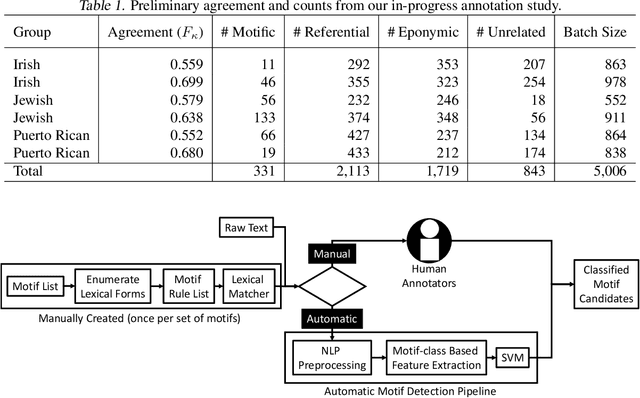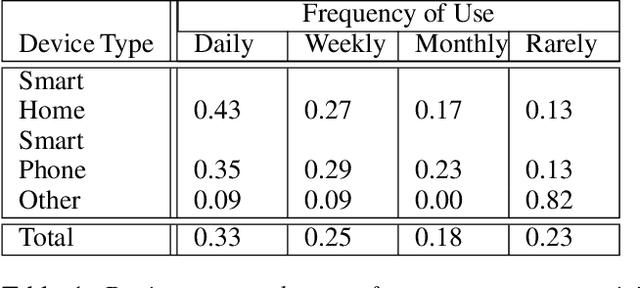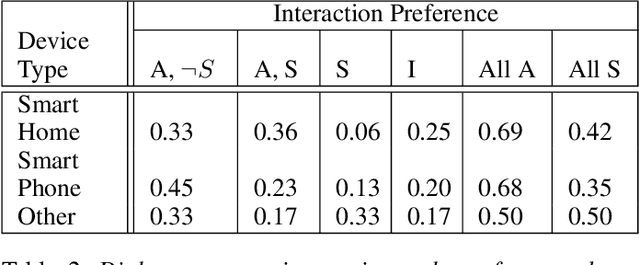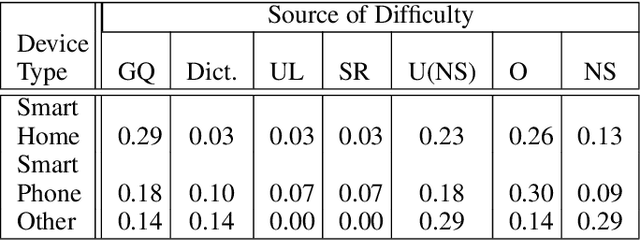Joan Zheng
Finding Trolls Under Bridges: Preliminary Work on a Motif Detector
Apr 12, 2022

Abstract:Motifs are distinctive recurring elements found in folklore that have significance as communicative devices in news, literature, press releases, and propaganda. Motifs concisely imply a large constellation of culturally-relevant information, and their broad usage suggests their cognitive importance as touchstones of cultural knowledge, making their detection a worthy step toward culturally-aware natural language processing tasks. Until now, folklorists and others interested in motifs have only extracted motifs from narratives manually. We present a preliminary report on the development of a system for automatically detecting motifs. We briefly describe an annotation effort to produce data for training motif detection, which is on-going. We describe our in-progress architecture in detail, which aims to capture, in part, how people determine whether or not a motif candidate is being used in a motific way. This description includes a test of an off-the-shelf metaphor detector as a feature for motif detection, which achieves a F1 of 0.35 on motifs and a macro-average F1 of 0.21 across four categories which we assign to motif candidates.
Evaluating Older Users' Experiences with Commercial Dialogue Systems: Implications for Future Design and Development
Jan 30, 2019



Abstract:Understanding the needs of a variety of distinct user groups is vital in designing effective, desirable dialogue systems that will be adopted by the largest possible segment of the population. Despite the increasing popularity of dialogue systems in both mobile and home formats, user studies remain relatively infrequent and often sample a segment of the user population that is not representative of the needs of the potential user population as a whole. This is especially the case for users who may be more reluctant adopters, such as older adults. In this paper we discuss the results of a recent user study performed over a large population of age 50 and over adults in the Midwestern United States that have experience using a variety of commercial dialogue systems. We show the common preferences, use cases, and feature gaps identified by older adult users in interacting with these systems. Based on these results, we propose a new, robust user modeling framework that addresses common issues facing older adult users, which can then be generalized to the wider user population.
 Add to Chrome
Add to Chrome Add to Firefox
Add to Firefox Add to Edge
Add to Edge